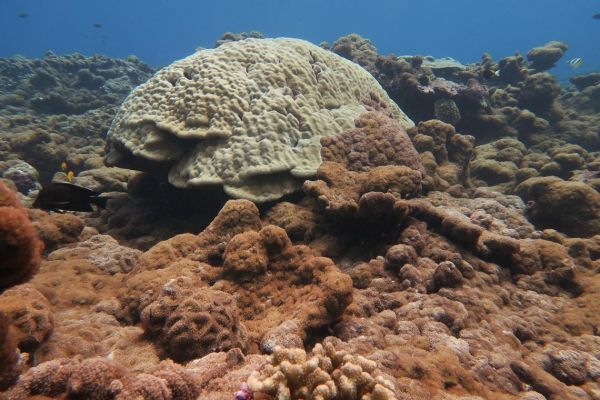Control efforts such as the removal of shipwrecks and application of chlorine may help mitigate the damaging effects of corallimorph, which is a type of invasive anemone, on valuable coral reefs in the Central Pacific Ocean, according to a new U.S. Geological Survey study.
“Coral reefs are home to a significant diversity of marine life, provide valuable economic and environmental services to millions of people, buffer shorelines from erosion and waves and can serve as a resource for the development of new medicines,” said Thierry Work, a USGS scientist and the lead author of the study.
Corallimorphs, or CM, can rapidly spread in coral reefs that have been degraded by environmental or man-made disturbances. At the Palmyra Atoll National Wildlife Refuge in the Central Pacific, researchers found CM expanding and smothering otherwise pristine coral reefs in an area near a shipwreck. Starting in 2007, USGS scientists and partners surveyed the CM-infested coral reef before and after removal of the shipwreck. They found that wreckage removal helped reduce the proportion of highly CM-infested areas from 21 percent to 14 percent, marking the first time that shipwreck removal was shown to have beneficial effects for reef recovery from CM.
Continue reading at USGS.
Image via USGS.


